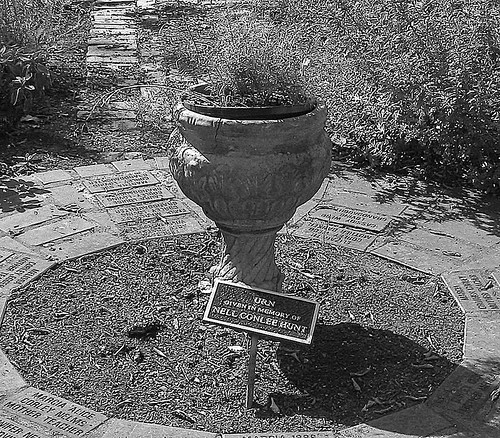Diane Fields's thoughtful post in the "Rainier Travel Photography" thread this morning made me want to learn LightZone's tool for saving an image in black and white. I'm beginning to get the hang of it. I'd like to have made a little more focus on the urn as subject and had a little more black-and-white contrast.
To make this image, I cropped the urn out of the larger color image which I had posted in the "Rainier Travel Photography" thread, in the Photography as Art forum, before I understood the parameters of the discussion there--that it wasn't broadly about "blurry photos."
Then with LightZone's "Channel Mixer" tool, I adjusted the RGB until the urn's appearance suited me as nearly as I could get it to. Then I saved the image and, to change it to JPEG, I exported it to a subfolder in My Pictures.

I would like to get it more starkly black and white.
Will go back and play with it some more.
Any suggestions to help me would be very welcome.
Mary
To make this image, I cropped the urn out of the larger color image which I had posted in the "Rainier Travel Photography" thread, in the Photography as Art forum, before I understood the parameters of the discussion there--that it wasn't broadly about "blurry photos."
Then with LightZone's "Channel Mixer" tool, I adjusted the RGB until the urn's appearance suited me as nearly as I could get it to. Then I saved the image and, to change it to JPEG, I exported it to a subfolder in My Pictures.

I would like to get it more starkly black and white.
Will go back and play with it some more.
Any suggestions to help me would be very welcome.
Mary

